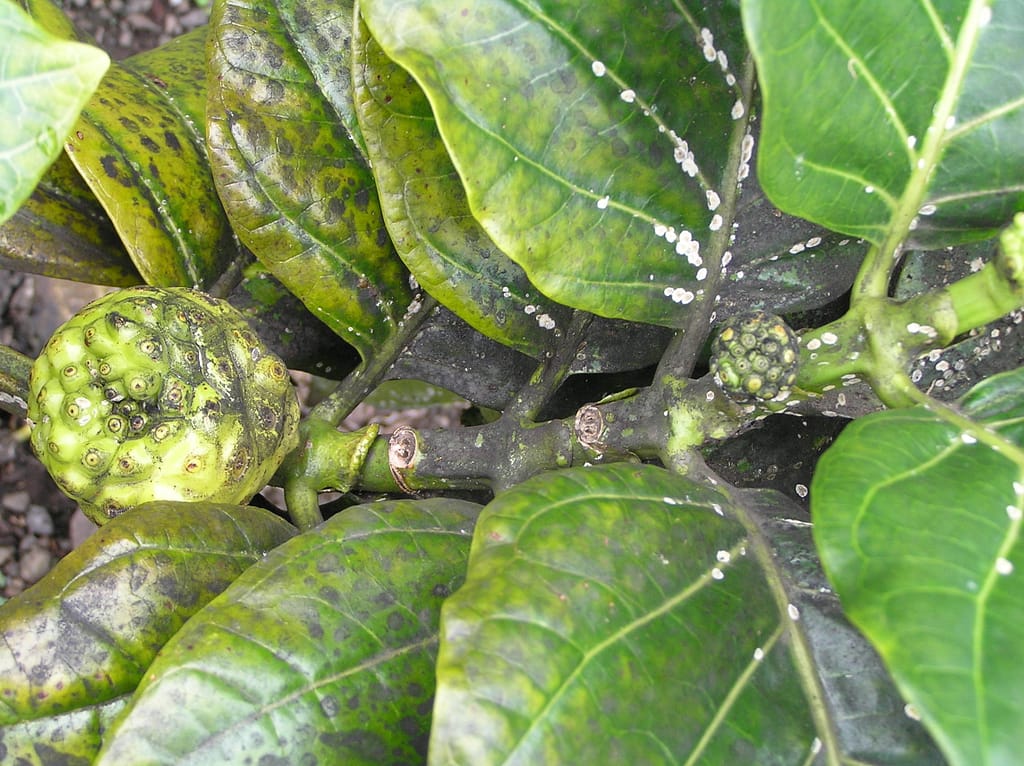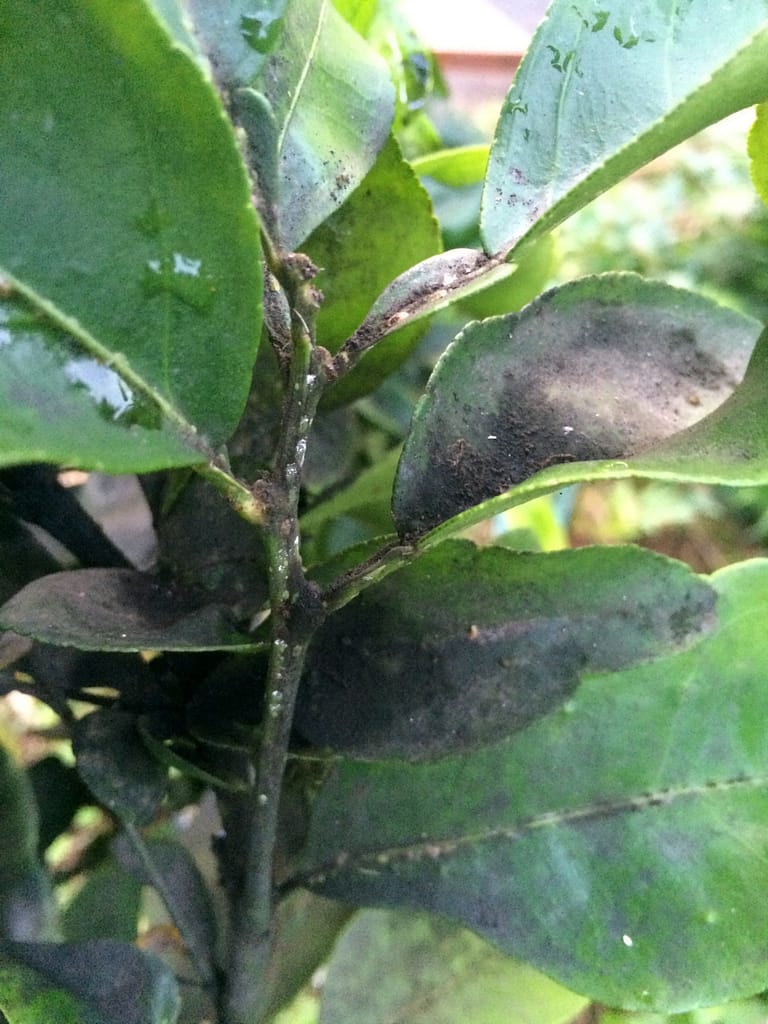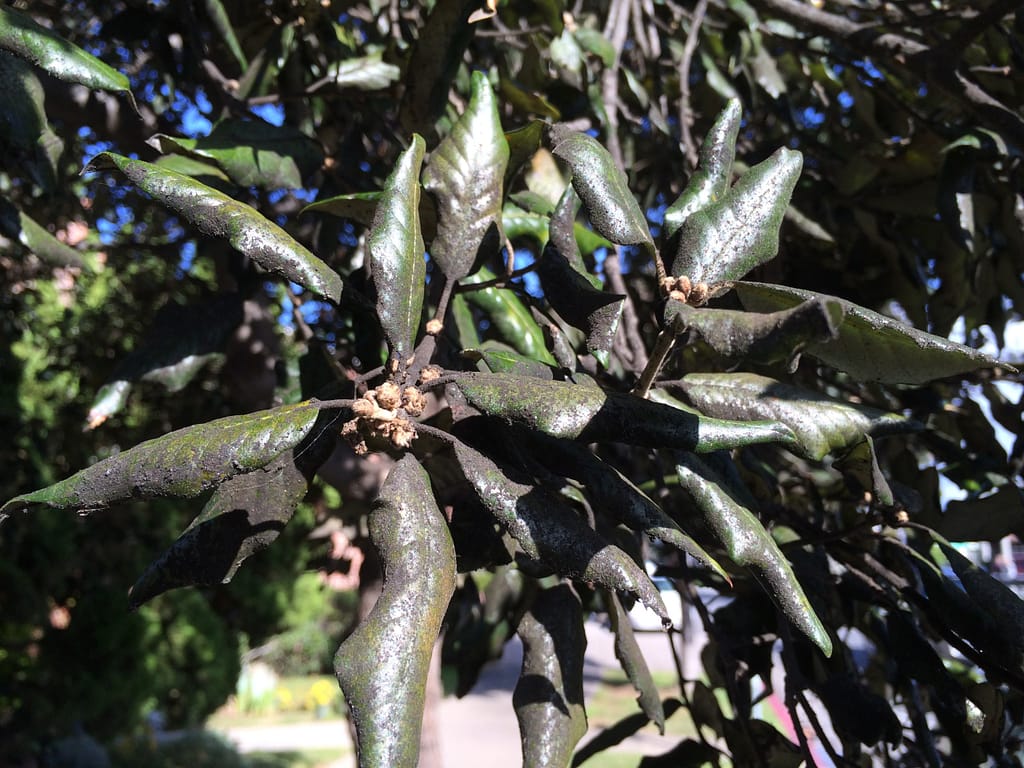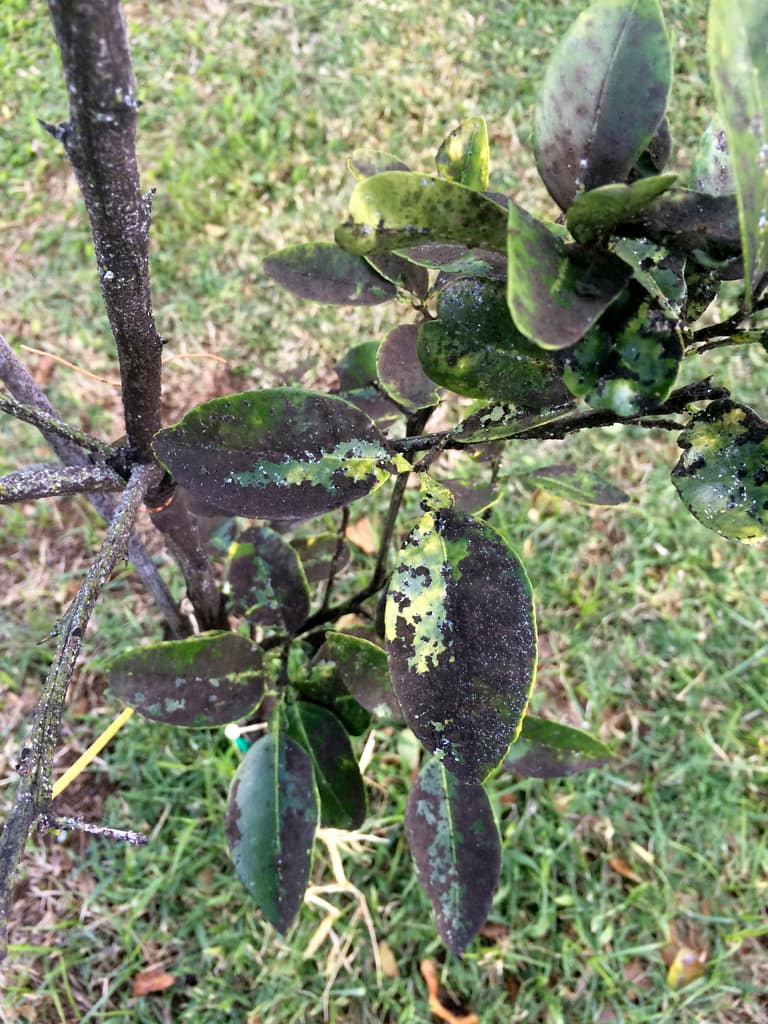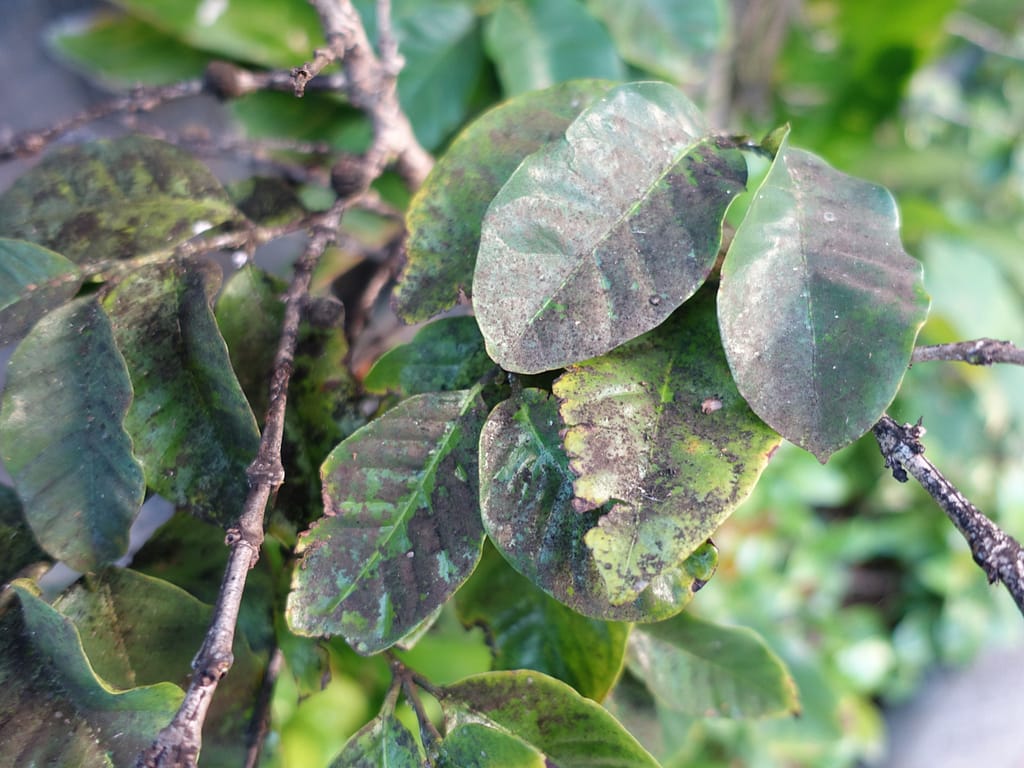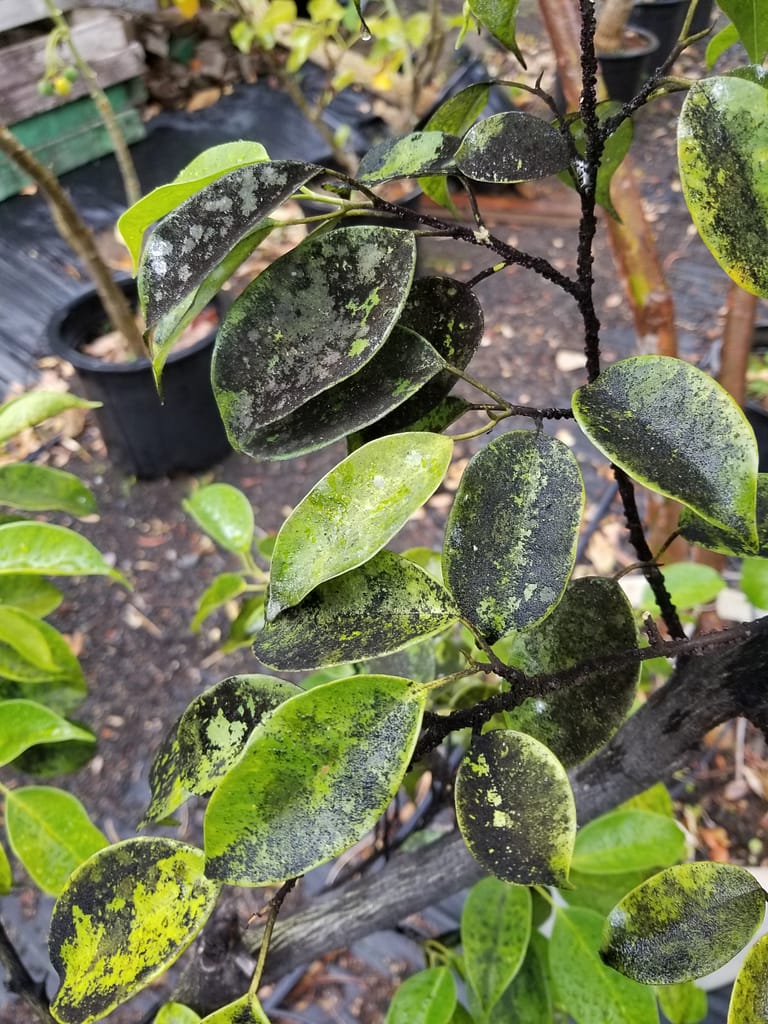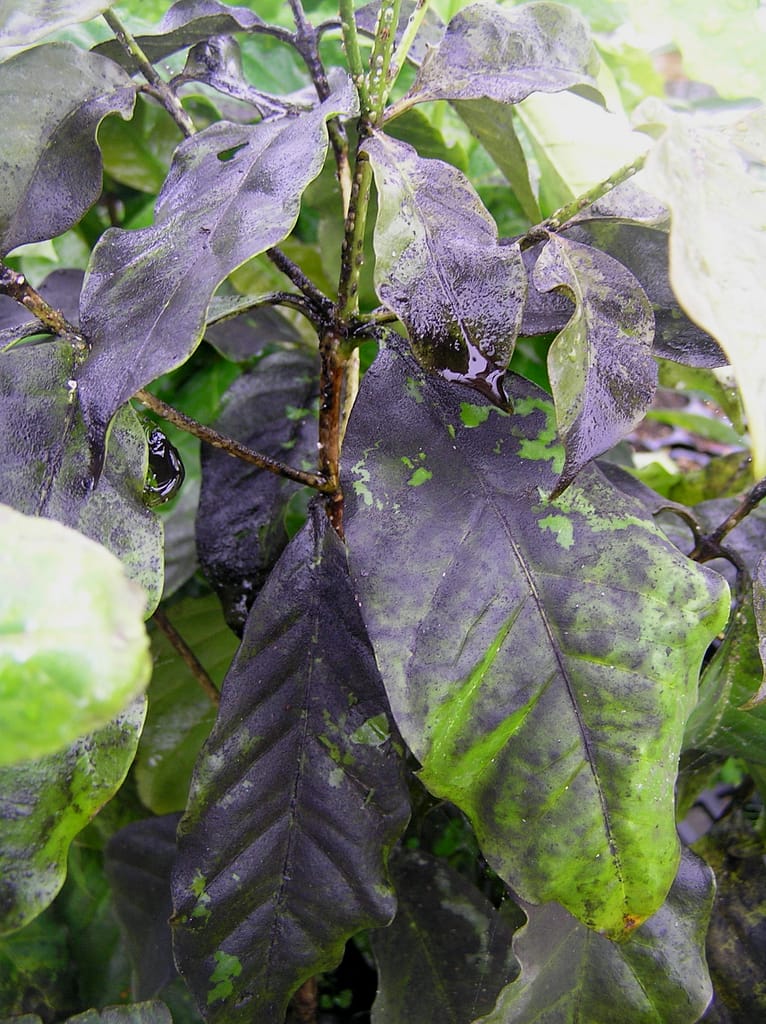
OLYMPUS DIGITAL CAMERA
What is Sooty Mold?
Sooty mold is a group of fungi that decompose honeydew deposits from piercing sucking insects. It does not directly damage the plant, but it covers the leaf surface and will decrease the efficiency of photosynthesis. This indirect damage is something that needs to be taken care of before it causes significant damage to the plant.
Disease Cycle
Sooty mold grows on both the stems and twigs of woody plants and the leaves. The sooty mold on the leaf will stay there and last as long as the leaf will. The sooty mold on the twigs, however, persists and is renewed by parts of the fungus produced in the previous season. The fungi are spread by splashing water and air-borne spores.
Symptoms and Identification of Sooty Mold
Sooty mold is recognized by the black coating of the leaves. It is pretty hard to mistake for anything else. A good indicator that it is also sooty mold is if you recognized any other insects that produce honeydew such as: aphids, psyllids, leafhoppers, mealybugs, soft scales, and whiteflies.
For images of plants with sooty mold scroll to the bottom for help in identifying if it is affecting your plant. If you have photos you’d like to add to the photos below you can send them to [email protected].
Management of Sooty Mold
Monitoring
Monitoring the piercing sucking insects and keeping them under control will help to keep sooty mold from gaining a hold in your landscape or garden.
Biological and Cultural Control
Preventing sooty mold and controlling it biologically would involve keeping natural predators for piercing sucking insects in the garden. As mentioned above, these insects include: aphids, psyllids, leafhoppers, mealybugs, soft scales, and whiteflies. Predators for these bugs can include: lacewings, lady bugs, soldier beetles, predaceous midges, parasitic wasps, hornets, yellow jackets, spiders, and others.
Encourage these predators by keeping pest populations low but not eradicated (when possible), not using broad range insecticides, and even purchasing some of them to add to your garden yourself.
You can also prune out infected branches and leaves. This removes the ugly appearance of sooty mold.
Chemical Control
You are able to combine 1 tablespoon of a household liquid detergent per gallon of water and use that as a spray to soak the mold. After 15 minutes you can spray it off with a stream of water. This will need to be repeated a few times over a few weeks. Even with this treatment, it is difficult to remove sooty mold. As time passes the sooty mold will flake off without any intervention.
Toxicity
As with almost all chemicals there is an associated toxicity rating for the active ingredients of different pesticides, fungicides, herbicides, and rodenticides. Here are a few places you can learn more about their toxicity with a table of their rating and what the rating means (first is the preferred):
http://pods.dasnr.okstate.edu/docushare/dsweb/Get/Document-3591/EPP-7457web.pdf
https://extension.psu.edu/toxicity-of-pesticides
These lists do not discuss how long these chemicals stay in the environment, how they affect other plants, or how they affect other beneficial organisms.

